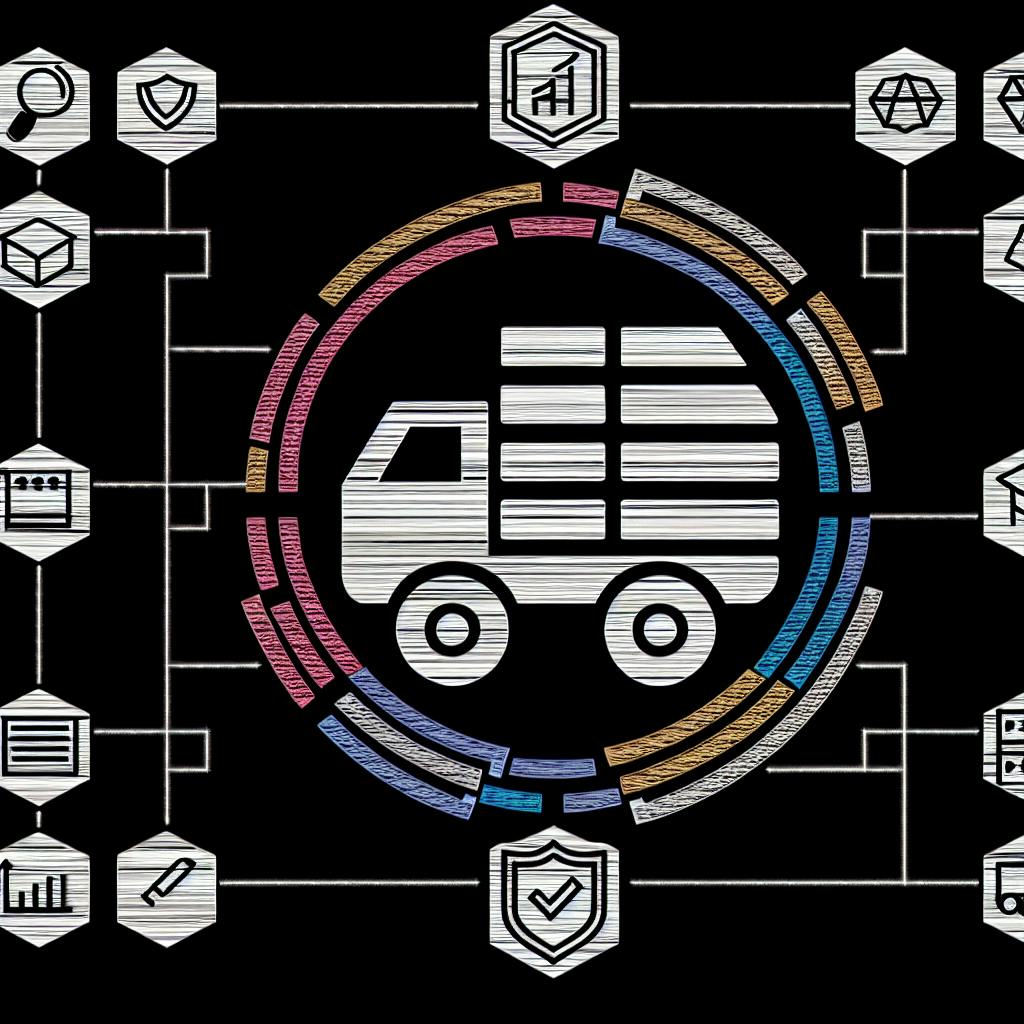AML (Anti-Money Laundering) case management is the process of investigating and handling suspicious financial activities to combat money laundering. It involves:
- Monitoring transactions and customer behavior
- Detecting red flags or unusual patterns
- Investigating potential money laundering cases
- Reporting findings to regulatory authorities
An effective AML case management system streamlines this process, enabling financial institutions to:
- Comply with regulations like the Bank Secrecy Act and USA PATRIOT Act
- Identify and mitigate risks of money laundering
- Avoid penalties and reputational damage
Related video from YouTube
Key Components of an AML Case Management System
| Component | Description |
|---|---|
| Central Data Repository | Stores customer data, alerts, transactions, and case details |
| Automated Monitoring | Analyzes data in real-time to detect suspicious patterns |
| Risk Scoring | Customizable rules to identify risks based on specific factors |
| Flexible Workflows | Adapts investigation approach to specific cases |
| Collaboration Tools | Enables information sharing and task assignment |
| Audit Trails | Maintains detailed records of case activities |
New technologies like AI, machine learning, and data visualization are enhancing AML case management by improving risk assessment accuracy, reducing false positives, and providing faster insights.
Best Practices
- Establish performance metrics (KPIs and KRIs)
- Provide ongoing training on emerging threats and regulations
- Foster cross-team collaboration and knowledge sharing
- Regularly update policies and procedures to adapt to changes
Future Trends and Challenges
- Emerging technologies like blockchain and cryptocurrencies
- Unified case management for fraud and AML investigations
- Global regulatory alignment for cross-border investigations
By prioritizing AML case management, financial institutions can protect their reputation, reduce risks, and contribute to a safer financial system.
Key Parts of an AML Case Management System
An AML case management system helps streamline the process of identifying, investigating, and reporting suspicious activities. A well-designed system should include the following key components:
Central Data Repository
A central data repository stores all customer information, alerts, transactions, and case details. This allows investigators to access relevant data in one place, reducing inconsistencies and improving investigation efficiency.
Automated Transaction Monitoring and Alerts
Automated transaction monitoring systems analyze large volumes of data in real-time, identifying patterns and anomalies that may indicate money laundering or other financial crimes. This automation enables investigators to focus on high-priority cases, reducing manual workload and human error.
Customizable Risk Scoring and Detection Rules
Customizable risk scoring models and detection rules help identify suspicious activities based on specific risk factors, such as customer behavior, transaction patterns, and geographic locations. Tailoring these rules improves detection accuracy and reduces false positives.
Flexible Case Investigation Workflows
Flexible workflows allow investigators to adapt their approach to specific cases, incorporating new information and evidence as it becomes available. This streamlines the investigation process, reducing time and resources required to resolve cases.
Team Collaboration and Reporting Tools
Collaboration and reporting tools enable investigators to share information, assign tasks, and track progress, improving overall investigation efficiency and effectiveness.
Detailed Audit Trails and Documentation
Maintaining detailed audit trails and documentation provides a complete history of all case-related activities, including investigations, findings, and actions taken. This ensures compliance with regulatory requirements and reduces the risk of fines and penalties.
| Key Component | Description |
|---|---|
| Central Data Repository | Stores customer information, alerts, transactions, and cases in one place |
| Automated Transaction Monitoring | Analyzes data in real-time to identify suspicious patterns and anomalies |
| Customizable Risk Scoring | Tailors detection rules based on specific risk factors |
| Flexible Case Workflows | Adapts investigation approach to specific cases |
| Team Collaboration Tools | Enables information sharing, task assignment, and progress tracking |
| Audit Trails and Documentation | Maintains detailed records of all case-related activities |
New Technologies Enhancing AML Case Management
Artificial Intelligence (AI) and Machine Learning (ML)
AI and ML systems can improve risk assessment accuracy and reduce false positives in AML case management:
- Machine Learning Models: These models can learn on their own, reducing the need for manual rule programming. They can analyze vast data quickly, accurately identifying money laundering patterns and reducing false alerts.
- Faster Insights: AI-powered systems can process large volumes of data rapidly, providing insights faster than manual methods.
Natural Language Processing (NLP)
NLP helps extract and analyze textual data efficiently:
- Automated Background Checks: NLP can read through public records, news articles, or social media to flag potential risks associated with customers or transactions.
- Contextual Understanding: NLP can reduce false positives by understanding context through sentiment analysis and topic modeling.
- Rapid Processing: NLP can process vast volumes of text quickly, providing insights faster than manual methods.
Robotic Process Automation (RPA)
RPA automates repetitive tasks, increasing operational efficiency:
- Task Automation: RPA can automate data gathering, reporting, and other repetitive tasks, freeing up investigators to focus on high-priority cases.
- Improved Accuracy: By automating manual tasks, RPA can reduce errors and improve the accuracy of AML investigations.
Data Visualization and Interactive Dashboards
Data visualization tools provide actionable insights through interactive dashboards:
- Trend Identification: Interactive dashboards enable investigators to quickly identify trends and patterns in large datasets.
- Case Prioritization: Visualizations help investigators prioritize cases more effectively, reducing time and resources required for resolution.
| Technology | Key Benefits |
|---|---|
| AI and ML | Accurate risk assessment, reduced false positives, faster insights |
| NLP | Automated background checks, contextual understanding, rapid text processing |
| RPA | Task automation, improved accuracy |
| Data Visualization | Trend identification, case prioritization |
sbb-itb-d1a6c90
Streamlining AML Case Management Workflows
Optimizing AML case management workflows is crucial for efficient investigation and resolution of potential money laundering cases. This involves improving alert triage, investigation processes, and workflow efficiency to reduce investigation times and enhance overall case management.
Prioritizing Alerts Effectively
Prioritizing alerts effectively is key to focusing on high-risk cases and reducing investigation times. This can be achieved by implementing a risk-based approach, where alerts are categorized and prioritized based on their risk level. AML case management software can automate alert prioritization using machine learning algorithms to identify patterns and trends in alert data.
Structured Investigation Processes
Structured investigation processes ensure thorough and consistent investigations. Customizable checklists can be used to ensure all necessary steps are taken, and all relevant information is collected and documented. This reduces the risk of human error and ensures investigations are conducted consistently and transparently.
Automated Escalation and Approval
Automating escalation and approval processes can streamline workflows by reducing the time and effort required for manual tasks. AML case management software can automate these processes using business rules to trigger escalations and approvals based on specific criteria, such as risk level or case complexity.
Role-Based Access Controls
| Access Control | Description |
|---|---|
| Role-Based | Assigns granular permissions to users based on their role |
| Secure Access | Ensures only authorized personnel can access sensitive case information |
| Restricted Tasks | Limits users to performing specific tasks based on their role |
Role-based access controls are essential for secure and efficient case management. By assigning granular permissions based on user roles, organizations can ensure that only authorized personnel have access to sensitive case information and can perform specific tasks. This reduces the risk of unauthorized access and protects case information from unauthorized disclosure.
Regulatory Compliance and Audit Readiness
Staying compliant with regulations and being prepared for audits is crucial in AML case management. As regulations evolve, organizations must keep up to avoid penalties.
Understanding Regulations
AML regulations frequently change, so organizations must stay updated on the latest requirements. Key regulations impacting case management include:
- Bank Secrecy Act (BSA)
- USA PATRIOT Act
- Anti-Money Laundering Act (AMLA)
Knowing these regulations is vital for compliance.
Maintaining Audit Trails
Audit trails demonstrate compliance with AML regulations. Organizations must keep detailed records of all case management activities, including:
- Alerts
- Investigations
- Reporting
Best practices for audit trail documentation:
| Practice | Description |
|---|---|
| Clear Records | Ensure records are easy to understand and provide a clear audit trail. |
| Timestamps and User Tracking | Track when and who accessed case information. |
| Version Control | Maintain version control of documents and records for accuracy and integrity. |
Periodic Audits and Quality Reviews
Regular audits and quality reviews ensure compliance and identify areas for improvement. Organizations should conduct periodic audits to:
- Evaluate Compliance: Assess compliance with AML regulations and find areas to improve.
- Identify Risks: Identify potential risks and vulnerabilities in the case management process.
- Improve Processes: Implement changes to improve case management processes and reduce the risk of non-compliance.
Choosing an AML Case Management Solution
Selecting the right AML case management software is crucial for effective compliance. Consider these key factors:
Important Factors
- Regulatory Compliance: Ensure the software meets AML regulations for reporting, monitoring, and customer due diligence.
- Scalability: Choose a solution that can grow with your organization's needs without compromising efficiency.
- User-Friendly Interface: An intuitive interface allows users to operate efficiently with minimal training.
- System Integration: Look for software that seamlessly integrates with your existing databases, monitoring tools, and reporting systems.
- Advanced Analytics and Automation: Opt for software with AI-driven algorithms for detecting suspicious activities, automated alerts, and predictive analysis.
- Customization: Seek software that can be tailored to your organization's specific requirements and workflows.
- Security: Ensure the software complies with robust security standards, including encryption, access controls, and regular updates.
- Vendor Support: Research the vendor's reputation, customer support, and responsiveness to issues or queries.
Solution Comparison
When comparing options, consider the pros and cons of each solution:
| Solution | Compliance | Scalability | Integration | Analytics | Customization | Security | Support |
|---|---|---|---|---|---|---|---|
| Solution A | ✅ | ✅ | ✅ | ✅ | ✅ | ✅ | ✅ |
| Solution B | ✅ | ❌ | ✅ | ✅ | ✅ | ✅ | ✅ |
| Solution C | ✅ | ✅ | ❌ | ✅ | ✅ | ✅ | ✅ |
In this example, Solution A offers a comprehensive set of features, while Solution B lacks scalability, and Solution C has limited integration capabilities. Weigh the pros and cons to determine the best fit for your organization's AML case management needs.
Best Practices for Effective AML Case Management
To ensure your AML case management system operates efficiently and stays up-to-date, it's crucial to implement best practices and foster continuous improvement.
Measuring Performance
Establish key performance indicators (KPIs) and key risk indicators (KRIs) tailored to your organization's needs and goals. These metrics help evaluate the effectiveness of your AML case management system. Examples include:
- Detection rate: Percentage of suspicious transactions or activities detected.
- False positive rate: Percentage of legitimate transactions incorrectly flagged as suspicious.
- Case resolution time: Average time taken to resolve a case from detection to final disposition.
- Investigator productivity: Number of cases investigated and resolved per investigator per unit of time.
Ongoing Training
Regular training keeps case managers and investigators informed about evolving threats, regulations, and technologies. Training programs should cover:
- AML regulation updates
- Emerging threats and techniques used by money launderers
- New system features and workflows
- Advanced investigation strategies
Cross-Team Collaboration
Encourage knowledge sharing and collaboration across departments for effective AML case management:
- Regular meetings and briefings: Share information, discuss challenges, and align efforts.
- Cross-functional training: Bring together teams from different departments to share expertise.
- Joint investigations: Collaborate on complex cases involving multiple teams and stakeholders.
Updating Policies and Procedures
Regularly review and update AML case management policies and procedures to adapt to changes:
| Activity | Description |
|---|---|
| Risk assessments | Identify and mitigate emerging threats and vulnerabilities. |
| Policy reviews | Ensure policies remain effective and compliant. |
| Procedure updates | Reflect changes in regulations, technologies, or threat landscapes. |
Future Trends and Challenges
Emerging Technologies and Risks
The rise of blockchain and cryptocurrencies has introduced new complexities for AML case management. While these technologies offer transparency and traceability, they also create new avenues for money laundering and terrorist financing. AML professionals must develop strategies to monitor and investigate these emerging risks effectively.
Unified Case Management
Integrating fraud and AML investigations into a single platform is becoming increasingly important. By unifying case management, financial institutions can:
- Break down silos
- Enhance collaboration
- Improve overall AML operations efficiency
This unified approach enables investigators to identify connections between seemingly unrelated cases, leading to better risk management and outcomes.
Global Regulatory Alignment
Managing cross-border investigations and regulatory compliance is challenging for AML professionals. With differing regulatory requirements across jurisdictions, ensuring consistency and coordination across borders can be difficult.
To overcome this, financial institutions must develop strategies for global regulatory alignment, including:
| Strategy | Description |
|---|---|
| Standardized Protocols | Establish common protocols for cross-border investigations |
| Collaborative Frameworks | Develop frameworks for collaboration between jurisdictions |
| Technology-Enabled Solutions | Utilize technology to facilitate cross-border coordination |
Conclusion
Money laundering and terrorist financing pose serious threats that financial institutions must address. An effective AML case management system is crucial to combat these financial crimes. This guide covered the key components of such a system and the importance of regulatory compliance.
As financial crimes evolve, AML professionals need to stay informed and adapt. By leveraging the right technologies and strategies, institutions can improve their AML operations and reduce risks. Some key points:
- Robust AML Case Management: A robust system streamlines workflows, reduces manual processes, and utilizes advanced technologies like AI, machine learning, and data visualization.
- Regulatory Compliance: Staying compliant with regulations like the Bank Secrecy Act, USA PATRIOT Act, and Anti-Money Laundering Act is vital to avoid penalties.
- Future Trends: Emerging technologies like blockchain and cryptocurrencies introduce new complexities. Unified case management and global regulatory alignment are also important trends.
An AML case management system is not a one-time investment but an ongoing process requiring continuous improvement. By prioritizing AML case management, financial institutions can:
- Protect their reputation
- Reduce the risk of fines and penalties
- Contribute to a safer financial system
| Key Benefit | Description |
|---|---|
| Reputation Protection | Avoid reputational damage from financial crime involvement |
| Risk Reduction | Lower the risk of fines and legal issues |
| Safer Financial System | Help combat money laundering and terrorist financing |
Stay informed about the latest trends and developments in AML case management to stay ahead of the game.
FAQs
What is the case management system in AML?
An AML case management system helps banks and financial institutions:
- Monitor customer activities and transactions
- Detect suspicious behavior or patterns
- Investigate potential money laundering cases
- Report findings to regulatory authorities
It's a systematic approach to identify high-risk activities, gather evidence, create cases, and comply with reporting requirements.
Key Steps
1. Monitoring and Detection
- Track customer transactions and behavior
- Flag unusual or suspicious patterns
2. Investigation
- Collect and analyze relevant data and evidence
- Assess the risk level and potential impact
3. Case Management
- Document findings and conclusions
- Create cases for further action or reporting
4. Reporting
- File reports with regulatory bodies
- Implement appropriate actions or escalations
| Step | Description |
|---|---|
| Monitoring and Detection | Track activities, identify red flags |
| Investigation | Gather evidence, assess risks |
| Case Management | Document findings, create cases |
| Reporting | File reports, take necessary actions |
The case management system streamlines this process, enabling institutions to effectively combat money laundering and comply with regulations.


